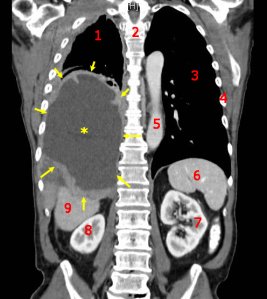
Associate Professor Samir Iqbal from the Electrical Engineering Department at the University of Texas in Arlington has developed a new detection method for cancer cells. It will allow doctors to diagnose the cancer cells in its early stages by tracking cellular behavior in real time using nano textured walls that mimic the layers of our body’s tissue.
Iqbal’s team include Young-tae Kim, a UTA associate professor in the Bioengineering Department; Muhymin Islam, a STEM doctoral candidate; and engineering students Mohammad Motasim Bellah, Adeel Sajid and Mohammad Raziul Hasan.
The results of their study are published in a recent copy of Nature Scientific Reports.
The published results stem from a 2014 $480,000 National Science Foundation grant that funded the design and creation of the device.
Substituting human tissue
Iqbal said that his team noted the many layers of tissue in our body, and they decided to make something that would mimic that layering.
“The answer was in creating a nanotextured wall that fools blood samples into thinking its actual tissue,” Iqbal said. “We used inherent properties of the cell walls to create a diagnostic tool. The cancer cells behave differently as they come into contact with the nanotextured walls. They dance.”
These “dancing cells” will eventually lead doctors to zoom in on the cancer cells and start the treatment immediately.
“Discovering the cancer earlier, before it metastasizes, is essential to surviving cancer,” Iqbal said. “Our device has the potential to do that.”
Khosrow Behbehani, dean of the UTA College of Engineering, said Iqbal’s research is groundbreaking.
“Dr. Iqbal and his colleagues are bringing engineering innovation to meet the challenge of early cancer detection,” Behbehani said. “The research aligns with UTA’s Strategic Plan, particularly the focus on Health and the Human Condition. Dr. Iqbal’s device could greatly improve cancer survival rates, which is good news for humanity. There are very few people around the world whose lives have not been touched by this dreadful disease.”
The Big C

Cancer is one of the most prominent fatal diseases of mankind.
Also known as a malignant tumor, or malignant neoplasm, it essentially involves having abnormal cell growth that has the potential to spread to the patient’s body. Notably, not all tumors are cancerous, and some are benign and does not spread to the rest of the body. However, in order to prevent this spreading, early detection is vital.
Right now, there are over 100 types of known cancer. There are many different causes of cancer. Some are impacted by the environment, diet, lifestyle, infection, and hereditary. The causes are, seemingly, endless (as an aside, it has been found that tobacco use results in 22% of cancer deaths).
And although we currently have several types of treatment in place, the effect on patients varies from one to the other. There is no uniformity in the results, which is another reason scientists are still trying to develop new methods to detect this disease in its early stages so that treatment can be applied right away with more effect.
With developments such as Iqbal’s and his team, we can hope that one day we can really push the Big C to the curb.